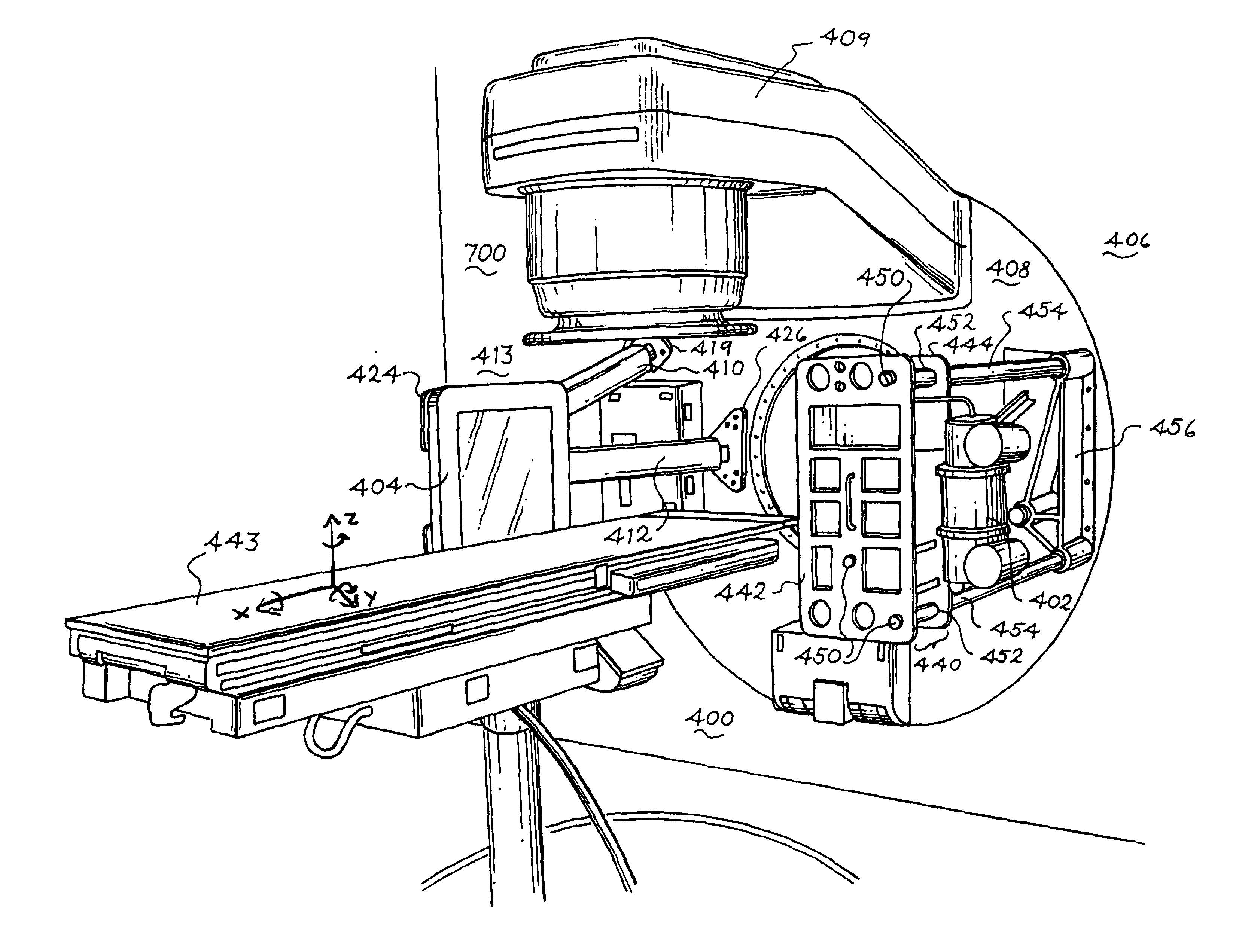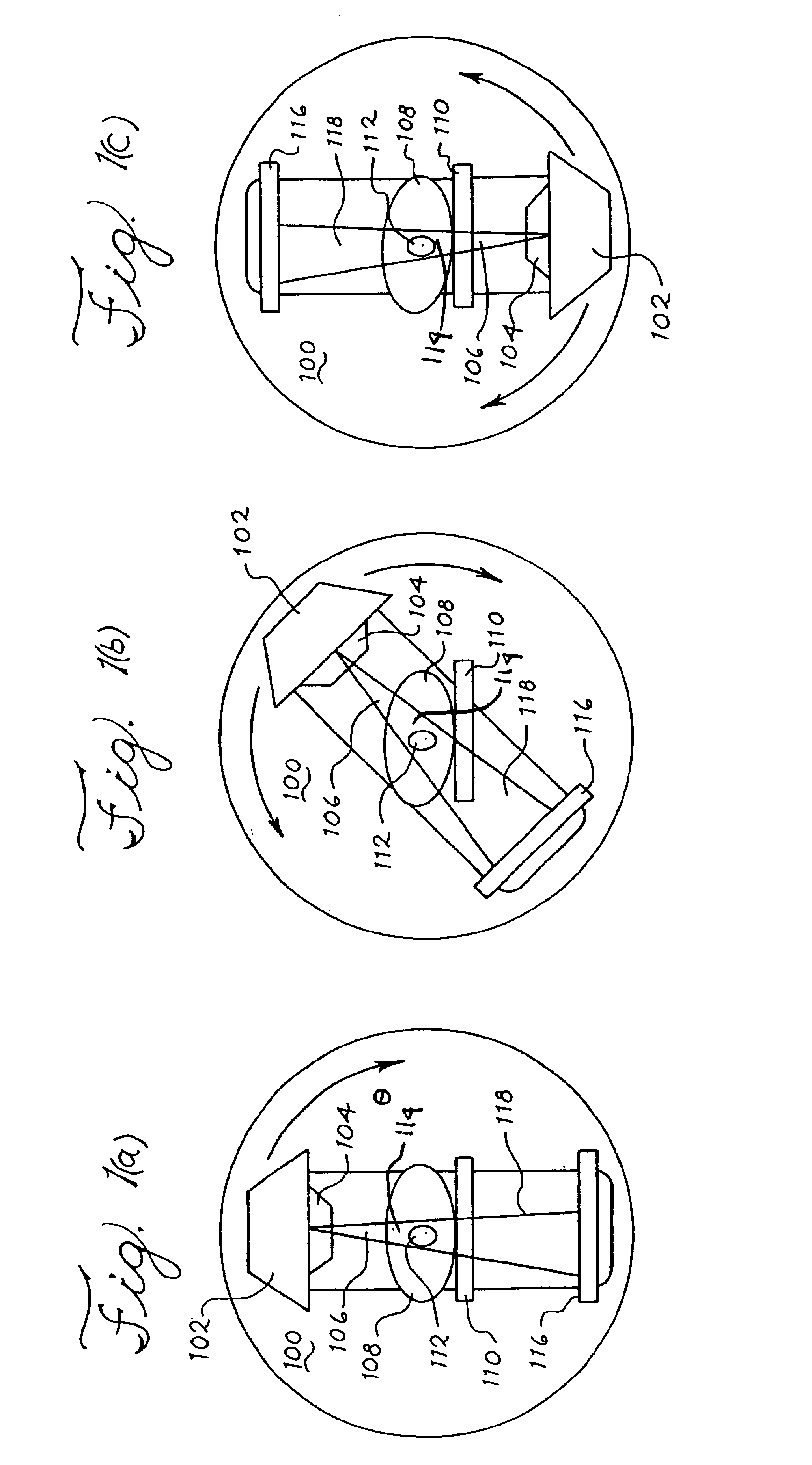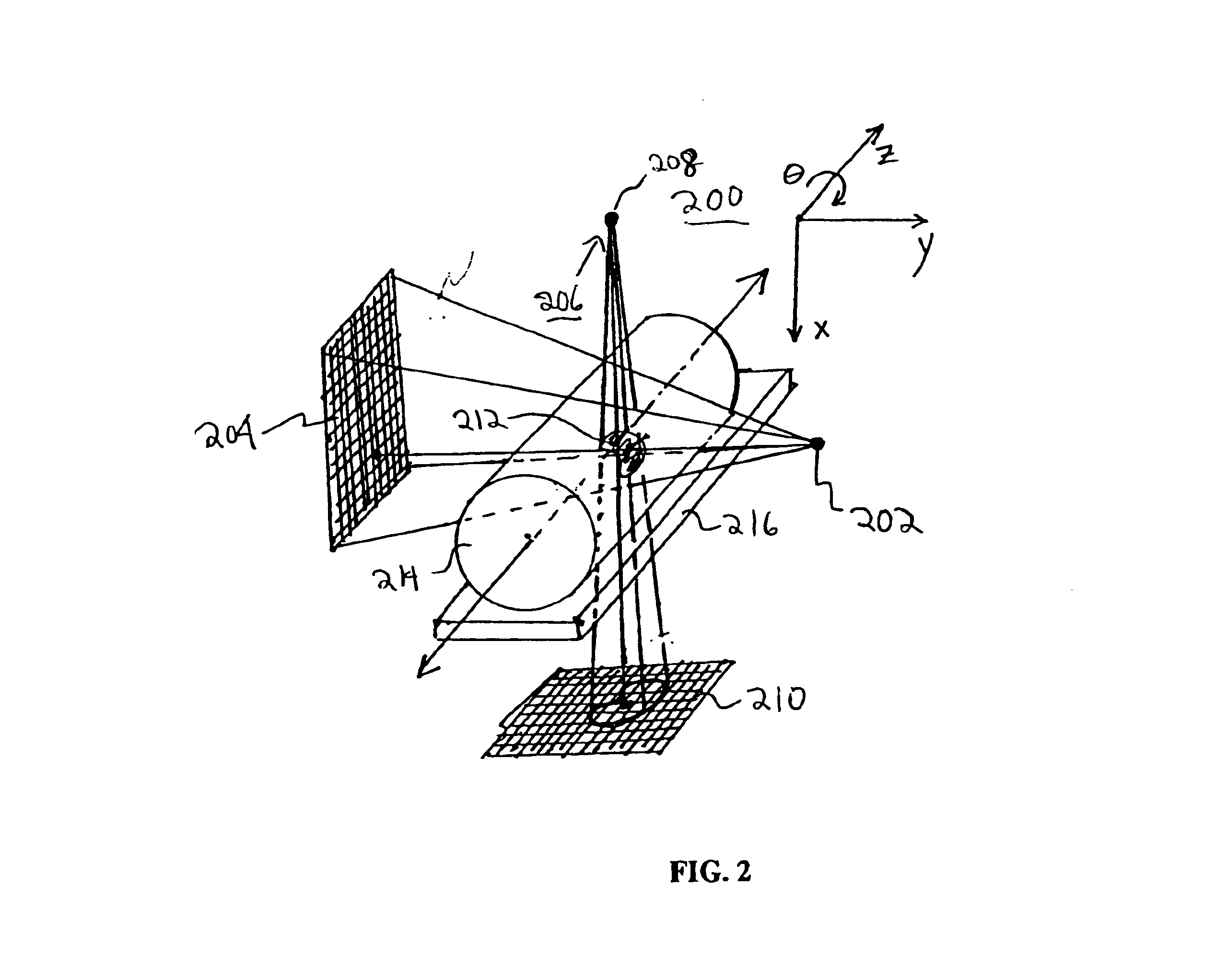Cone beam computed tomography with a flat panel imager
a computed tomography and flat panel imager technology, applied in the field of cone beam computed tomography system, can solve the problems of limited delivery of increased dose, increased volume of normal tissue, intrafraction errors, etc., and achieve the effect of reducing radiation treatment errors, improving radiation therapy precision, and adequate visualization
- Summary
- Abstract
- Description
- Claims
- Application Information
AI Technical Summary
Benefits of technology
Problems solved by technology
Method used
Image
Examples
second embodiment
f FIG. 17 when employing a support for a flat-panel imager according to the present invention;
[0048]FIGS. 21(a)-(b) schematically shows a front view of the wall-mounted cone beam computerized tomography system of FIG. 17 when employing a third embodiment of a support for a flat-panel imager according to the present invention;
[0049]FIG. 22 is a diagrammatic view of a portable cone beam computerized tomography system employing a flat-panel imager according to fifth embodiment of the present invention;
[0050]FIGS. 23(a)-(d) are diagrammatic sketches illustrating the geometry and operation of the cone beam computerized tomography imaging systems of FIGS. 17-22;
[0051]FIG. 24 is a flow-chart showing an embodiment of the processes involved in acquiring a cone beam computerized image for the cone beam computerized tomography imaging systems of FIGS. 17-22;
[0052]FIG. 25 is a perspective drawing illustrating an embodiment of a method for geometric calibration of the imaging and treatment deliv...
PUM
 Login to View More
Login to View More Abstract
Description
Claims
Application Information
 Login to View More
Login to View More - R&D
- Intellectual Property
- Life Sciences
- Materials
- Tech Scout
- Unparalleled Data Quality
- Higher Quality Content
- 60% Fewer Hallucinations
Browse by: Latest US Patents, China's latest patents, Technical Efficacy Thesaurus, Application Domain, Technology Topic, Popular Technical Reports.
© 2025 PatSnap. All rights reserved.Legal|Privacy policy|Modern Slavery Act Transparency Statement|Sitemap|About US| Contact US: help@patsnap.com



